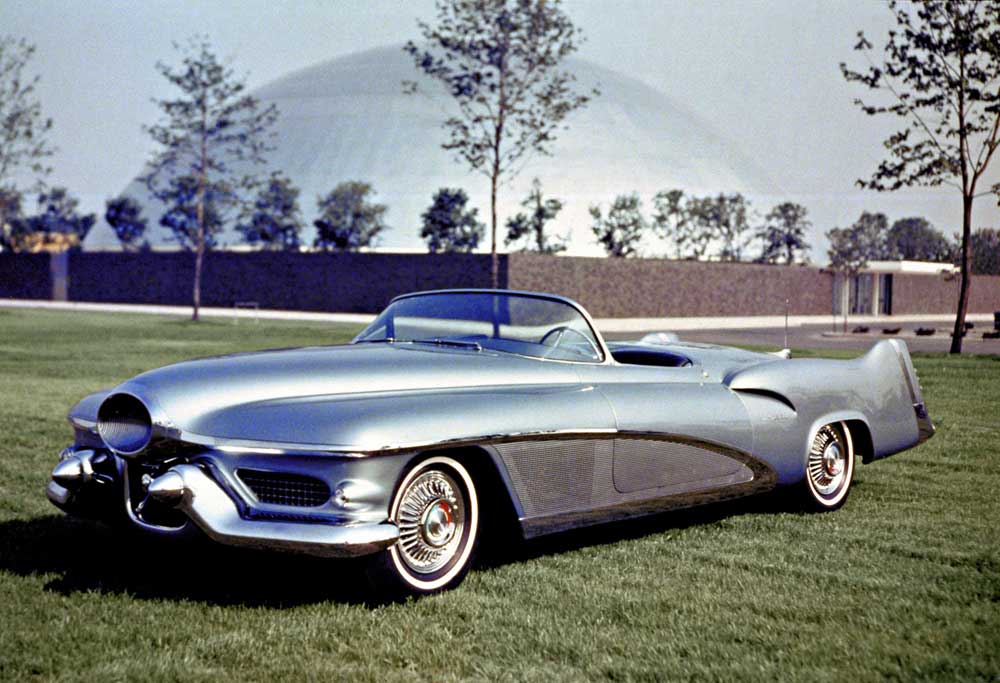1951 GM Le Sabre: Indisputably the most famous and influential concept car of the 1950s, the Le Sabre served as GM design chief Harley Earl's (pictured) daily ride for two years after it returned from the Motorama circuit.
1951 Buick XP-300: With a lightweight aluminum body and a supercharged 335-hp V-8 engine, it could hit 140 mph.
1953 Cadillac Le Mans: A low-slung two-seater created to commemorate Cadillac's run in the famous 24-hour race of the same name.
1954 Buick Wildcat II: It made use of a 322-cubic inch V-8, a year before the Corvette would move to eight cylinders.
1954 GM Firebird I: One of GM's wildest, most overtly jet-inspired visions of our motoring future, seating one.
1954 Pontiac Bonneville Special: This curvaceous version of the Chevrolet Corvette never saw production.
1956 Buick Centurion: Despite its transparent top and fiberglass body, this coupe predicted Buick's style into the 1960's.
1956 GM Firebird II: This version of GM's jet-inspired creation seated four.
1956 Oldsmobile Golden Rocket: A lightweight, fiberglass-bodied sports coupe with a 275-hp Rocket V-8 engine.
1959 Cadillac Cyclone: This rocket-styled roadster included a crash-avoidance system that used radar sensors mounted in the car's nosecones.
Before TV advertising really took off, General Motors designed futuristic concept cars to show off to the public at a series of lavish "Motorama" auto shows.
From 1949 to 1961, General Motors dazzled the public with its vision of our automotive future: Motorama. With singing, dancing and live music (not to mention free admission), Motorama auto shows were, in an era before TV advertising really took off, the ultimate corporate infomercial, drawing millions of wide-eyed car aficionados.
Source: Reminise



















































